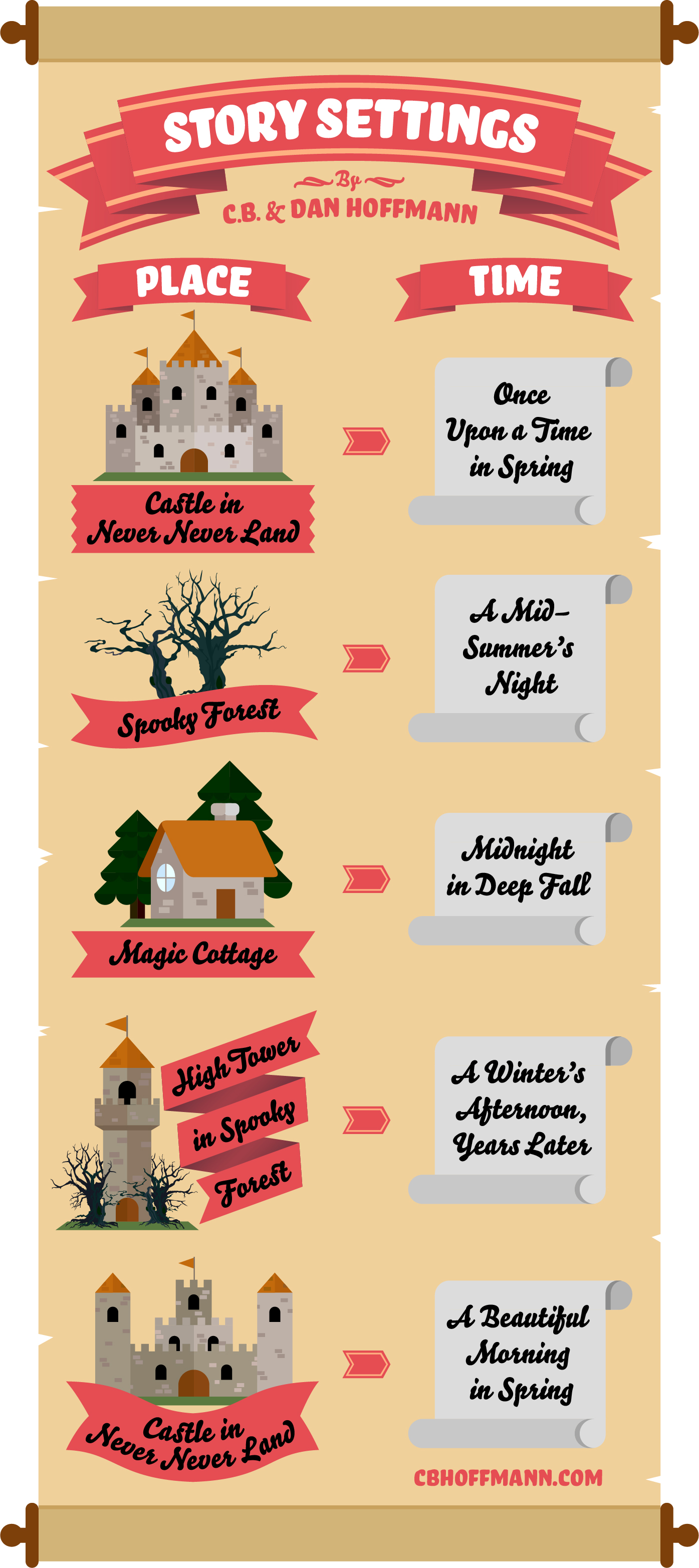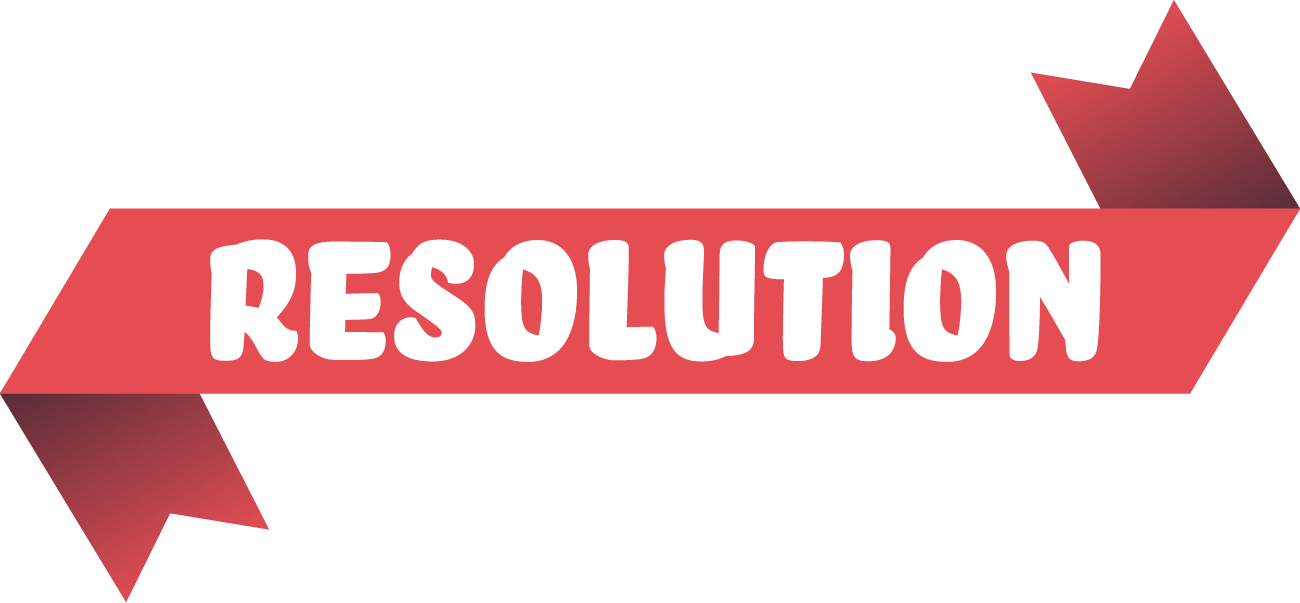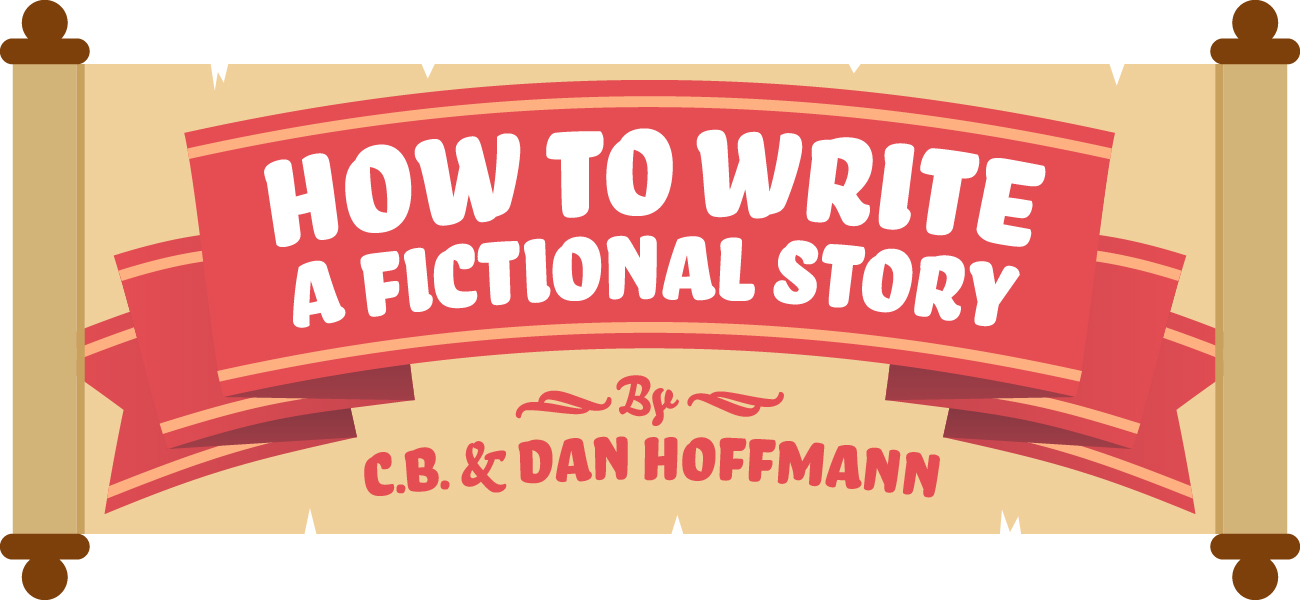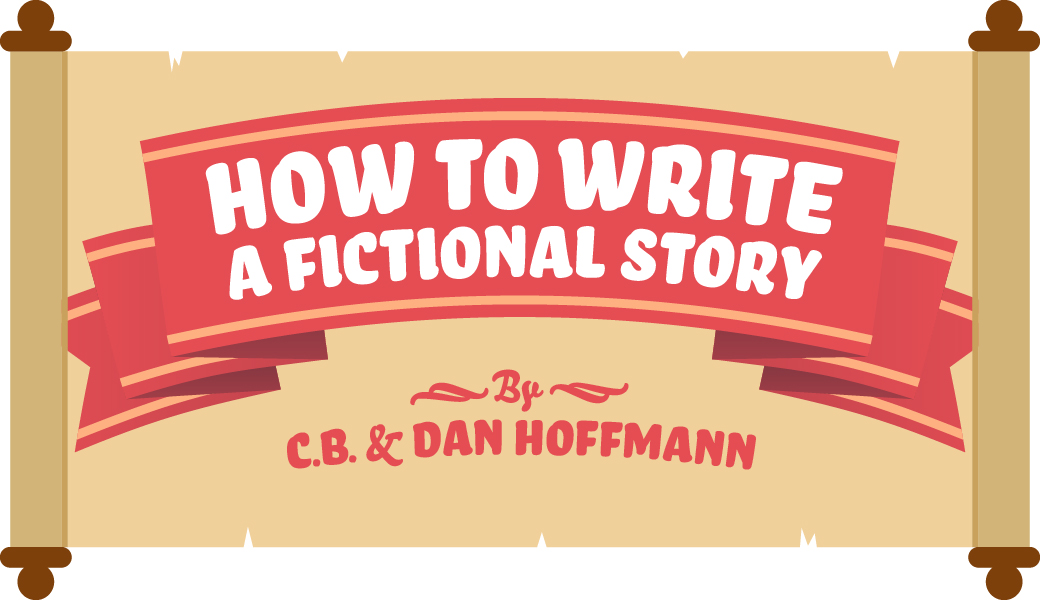There are five components that constitute a good story: character, conflict, setting, plot, and resolution (although some adventures, such as Star Wars or Lord of the Rings end an episode with a temporary or partial resolution to an ongoing struggle, leading into the next episode). These components keep the story flowing and allow the action to follow a logical progression. Without these main elements, a story remains underdeveloped and usually lacks clear purpose or conclusion. This article will deal with these five components, starting with character and conflict, and how to develop the three essential characters in fiction: hero, victim, and villain. Let’s focus on the hero, first, who is the main character in any story, whether it’s fiction or nonfiction.

Character
The Hero
The hero, also called the protagonist, is the core of your story and he/she always has a goal or ambition—a purpose that is driving his/her actions. All characters, plots, actions and motives serve to drive the action either for or against the hero. Therefore, nothing happens in the story that doesn’t directly or indirectly involve the hero. Even if the hero’s conflict is internal, or the hero is his own worst enemy, or the hero is also the victim—the hero is still the core of the story. No hero? No story.
There are also the DC and Marvel Superheroes, X-Men, Guardians of the Galaxy, Star Wars Jedi, etc., which are examples of bigger-than-life heroes rising up to rescue mankind, who is weaker and practically helpless against forces beyond the powers and capabilities of the human race.
The idea of superhero forces, next to supernatural, rescuing mankind hails back to Roman or Greek mythology. And many religions believe in many things, but only Christian believers have faith in the only Super Hero who really has rescued mankind—Jesus Christ.
The Tragic Hero
The tragic hero starts out as more of a villain who comes to realize he/she has gone terribly wrong and has hurt or destroyed those held dear. Once convinced of this, the tragic hero turns from a destructive direction and tries to salvage the relationships or goals that have been damaged. Unfortunately for the tragic hero, repentance usually occurs too late and the hero either loses his/her life or that of dear ones or even life goals.
The Villain or Antagonist
Normally, the villain is a separate person or circumstance that opposes the progress or success of the hero, becoming antagonistic against the hero. The villain is not necessarily an evil entity—it could be a faction of society or a cultural injustice, or even the hero’s personal handicap, whether emotional, physical, mental, or spiritual. However, if the villain is an actual person, many interesting and action-filled subplots can result.
If you create the antagonist such that the villain gains the sympathy of your reading or viewing audience, then you have a popular plot foundation. Just remember, the villain does not have to be revealed at the beginning of your story—keep the reader guessing and you’re creating mystery and suspense. Nor does the villain have to be ugly or detestable—the villain just has to be in opposition to the hero, for whatever reason. A fierce competitor in a sport or contest could make an excellent villain. After all, the villain is simply the adversary of, or in opposition to, the hero. This doesn’t make the antagonist evil, just determined to win or overcome.
The Villain’s Role in Conflict
And again, the villain is in direct opposition to whatever the hero is trying to accomplish or overcome; whether the problems are brought internally or externally, the villain is determined to defeat the hero’s efforts. Now, wouldn’t it be necessary to determine WHY the villain is such an antagonist? You’ve got many choices but this is paramount to making the conflict real enough to keep a reader interested. Is the villain a jealous or vengeful past friend or relative? A competitor for the same prize (a trophy, a lover, fame, popularity, etc.)? Or, is the villain just some demented soul seeking to destroy anything good in his/her path? And the choices go on…but you’ve got to choose one—if you’re to launch your story, you must have a solid conflict.
The Victim
An interesting thing about the victim is that the victim can also double as the hero. So, actually, the hero can be both the hero and the victim, either by his/her own doing or by accident. The reading or viewing audience is even more sympathetic or supportive to a complex hero that doubles as both.
However, the victim is usually at the mercy of the villain, but the hero and victim can be one and the same. Let’s say the victim rises up to oppose and overcome the villain. Is this possible? Well, in real life it has been known to happen. Another scenario is that the hero tries to rescue the victim, creating more suspense and action, and winning the hearts of the reading or viewing audience. Again, the DC and Marvel Superheroes, X-Men, Guardians of the Galaxy, Star Wars Jedi, etc., are examples of bigger-than-life heroes rising up to stop the forces of evil attempting to destroy the human race.
The victim is not always the damsel in distress. It can also be society, culture, or a non-human, such as an animal or fairy or animated car, etc. It depends on whether you’re writing non-fiction or fiction or fantasy or science fiction. All character types must stay true to the genre or type of story you are crafting.

The Essential Conflict
Without the conflict, there is no story. Even children’s stories or fairy tales have conflicts, sometimes quite violent ones. To create goals or obstacles to overcome, conflict is inevitable! Conflict can be born of forces or problems outside or within the hero. Outside opposition could be brought by physical elements, such as gangs, a personal tormentor or abuser, or perhaps rejection by a society or culture trying to imprison the hero or direct his/her path through poverty or hatred, in opposition to the plans of the hero. And there could be other similar negative outside hindrances, but the inner turmoils are often the hurdles harder to overcome. For instance, severely low self-esteem, lack of faith or personal direction, refusal to forgive an offense, a physical disability, or perhaps a terminal disease are just some options of a hero’s conflict that speak to the reality of our lives. The more REAL you make it, the more relative it is to your audience and the more engaged they will become… a win/win plot for the author.

Setting—Where it Happens, Matters
Setting is Time and Locations
Again, the setting—both time and locations—must be chosen to enhance the plot structure and conflict of your story. Obviously, if a handicapped mountain climber is determined to climb Mt. Everest, the story could range between his/her home and all relevant places leading to the Himalayas. A desert or remote island wouldn’t get your hero to the mountain top! Or, if you’re writing about a conflict between Billy the Kid and Wyatt Earp, you wouldn’t place them in the middle of twenty-first century New York City, shooting out of speeding ride shares….unless, of course, you’re writing a Sci Fi…!! Now, that’s an idea!!
Bottom line, it’s important for the time and location (setting) to help drive the action in the storyline. Again, this is one of the major story elements that works to facilitate the action in the story for the main character, or hero!
Use Graphics
Try drawing a visual map of the various locations that would be needed for your story to progress from A to Z. Next to each location, note which characters would be active there. Do this for each location and your story should start to fit together. Here’s a quick example for the structure of most fairy tales:

Castle in Never Never Land—Princess Emma enslaved by Evil Stepmother
Spooky Forest—Emma escapes castle
Magic Cottage—Emma captured by stepmother/wicked dragon & caged
High Tower in Spooky Forest—Prince destroys dragon and rescues Emma
Castle in Never Never Land—They live happily ever after
Now, as your story develops, add more description to each scene and make your story COME ALIVE!!
Remember that setting will vary depending on the genre, or type, of book you’re writing, so let’s explore a few:
Setting—Historical Text
For instance, a historical piece would require some comments or facts that are supportable with historical records. The timing, also, would demand to be supported by historical records/archives.
Setting—Historical Fiction
HOWEVER, if you are writing a historical novel that combines fiction with historical facts—which, by the way, the historical novel was originated by Alexandre Dumas, with The Three Musketeers—then you’d have some flexibility with the element of time. In fact, there are many ways to approach such a genre and to even create an entirely previously unattempted magic with the element of time. Flashbacks could leap onto the page with tremendous interest and imagination of fiction mixing with historical facts. AND the setting could occur in outer space; let’s say you mix the historical event of the American Civil War with some fictional characters operating as spies for the Union. This would combine Civil War historical facts with fictional characters to create an American historical fiction drama but because there was a definite time period for the Civil War, you would have to keep the timing between 1861—1865. AND of course, the location could range all over the eastern seaboard, but it would have to remain in America.
Setting—Sci Fi
Or, if you’re writing science fiction, the sky is literally the limit or even the center of the Earth—meaning, there is no limitation on time or location in this genre. The main limitation is your imagination!! For science fiction, the location in your setting could be in outer space, on planet Earth or any planet in the galaxy, in or on the surface of Earth, or anywhere you can make it work. For timing, the past, present, or future are available for choice, but you must make the timing work with the location or your story might fall apart. Sci Fi is very difficult to write because you must combine just enough from the realm of possibility with fantastic imagination… always writing around the edges of reality.
Setting—Fantasy
Setting can play out the same in fantasy as it does in science fiction. Again, just make certain your chosen locations and time elements serve to drive forward the action in the story. The main difference between fantasy and science fiction is that in fantasy, non-human characters are used that can talk and act like humans.
Setting—Nonfiction Biographies or Autobiographies
Only the documented dates and facts of past events are acceptable for biographies or autobiographies. Regardless of whether you’re writing about yourself or someone else, only the substantiated truth should be used in works of nonfiction. If you fail to report only the truth, legalities most likely would result.
Setting—Fiction in Various Forms
Whether your fictitious story is mystery, suspense, romance, children’s stories, crime, inspirational, horror, or fictional western—the location and timing of your story must work as an engine to drive the story through its many scenes and events to its final conclusion. The role of location and timing can’t be over-emphasized and poor selections can derail your story.

The Story Plot
It’s like they’re twins! It might be hard to tell them apart because they’re cut from the same cloth, more or less, but the conflict and plot do have definite similarities. One definitely cannot exist without the other because once you create a plot, or plan and reason behind the action, the conflict naturally follows. Not even a fairy tale lacks plot and conflict. In writing, I have found the best approach to writing a novel is to create the plot first—determine what the hero’s ultimate goal is and imagine a few obstacles he/she might encounter in accomplishing this goal. Once this conflict is established, the various characters that would be involved will fight for their place on your written page. This is a good point to brainstorm with passion, without reserve, and discover the alternate directions you can take and the perfect characters to use in developing your story. Remember that the direction of the conflict and the characters you select will drive your story through to the resolution. The resolution will be the summation of all the plot points and all the characters coming together in the end.
There are several types of conflicts that can be worked into a plot but each involves man (the hero) in opposition against a particular adversary or obstacle or situation he/she must overcome.
Typical Plot Structures and Conflict
Let’s explore each one!
Man (or Woman) vs. Self
This could come packaged in many forms
- The hero has an impediment or handicap to overcome: this could be physical, mental, societal, economical, educational, skill-related, lack of faith or trust, lack of confidence or motivation or direction, etc.
- In this plot structure, the hero is not usually struggling against a human villain but against an inanimate, or even abstract object, which doesn’t make it any less real, nonetheless. In story characters and in real people—never underestimate the power of emotions and NEVER make fun of teenagers in the grips of their emotions. Be sympathetic and make your characters sympathetic whenever possible—unless, of course, you’re creating a hated villain, then insensitivity would work well.
- Or, likeAlexa Silven in Consuming Fire: An Alexa Silven Novel, the main character is locked in a spiritual struggle against conscience or supernatural forces.
Man vs. Man
- Usually a contest or competition with another human, the antagonist or villain, serves well for this particular plot structure.
- The hero’s ultimate goal can take the form of an inanimate object, such as a trophy or a gold medal for winning a race—even a race for a handicapped hero in a wheelchair.
- The ultimate goal can also involve the intangible prize of someone’s heart. A familiar plot structure for romance is boy finds girl; boy loses girl; boy gets girl back.
Man vs. Society
- Again, along with other personal problems, this could involve pitting the hero against gangs, or poverty, or social injustice in various forms, including prejudice or stereotyping.
- Man vs. Society could also create a tragic hero who loses his life or battle in overcoming the obstacles of society, but ultimately winning by improving society for others.
- Man vs. Society is also an excellent plot structure to use for stories revolving around the setting (time and place) of war—past, present, or future. It works on Earth or in outer space—just ask the Star Wars rebellion.
Man vs. Nature
- This was an extremely popular plot structure for heroes struggling against the forces of nature. For instance, consider two of Jack London’s most popular adventure novels, both of which became major motion pictures—White Fang and Call of the Wild, which use the setting of the frozen mountains of the Yukon Territory of Canada during the time of the 1890’s Klondike Gold Rush. But this plot structure could be moved to the ocean or to mountain climbing in the springtime or to outer space. Nature is found in many places.
- An interesting twist is that the human hero isn’t the only hero in these stories. The wolf dogs jump on board as victims that the hero must save and they, in turn, save the hero
- More recently, The Revenant was a film also employing the plot structure of Man vs. Nature for the excitement and adventure found in the wild outdoors.
Man vs. Technology
- Again, this is fairly self-explanatory and could involve a contest or competition
- OR, it could take on an ethereal nature as technology comes to life, as in I, Robot or 2001: A Space Odyssey.
- As you can see, science fiction can take a variety of directions, especially with the invention of robots, artificial intelligence, and autonomous machines and vehicles, around which entire movies have been built, such as Transformers.
Man vs. Fate
- Fate could also represent supernatural forces or the natural outcome or results of the hero’s decisions and actions
- Fate, or the supernatural, could also involve supernatural beings or workers of magic, as in stories like Lord of the Rings or The Legend of King Arthur—to name a few
- We can’t ignore that fate or the supernatural has also been the main plot structure in stories involving vampires or dragons or fairies or witches, etc.
- Man vs Fate or the Supernatural is a popular plot structure for horror stories and movies
Putting It All Together
Here’s an example of a story plot that clearly shows the roles of the victim, villain, and hero. In my book, Consuming Fire: An Alexa Silven Novel, the main character is complex and unusually intriguing because she is all three characters rolled into one. As the victim, Alexa Silven is being blackmailed into assassinating three different men she doesn’t know. As the villain, she is coerced into moonlighting as an assassin, which creates two villains—the blackmailer and Alexa Silven, the victim/villain.
And as the tragic hero, she turns on the blackmailer and ends his cryptic threats and emails, determined to disconnect with him and the foul business he has forced her in to. Unfortunately, their final showdown does not end well for our hero.
As for her conflict, it is both internal and external. External because she is being forced into serious crimes by a blackmailer threatening to expose her revered father’s true legacy. Internal conflict arises from her struggle and guilt in going against her moral convictions. Her soul is tormented into doubting God’s love and forgiveness because she’s listened to lies.
Normally, though, the main character isn’t stretched so thinly and writing such multiple roles into one character are a serious challenge to the author.
Another interesting tragic hero would be Darth Vader. Evil almost to the end, he turns against the Empire and rescues his son, Luke Skywalker from the evil emperor of the Dark Side, but he loses his own life in doing this. Tragic heroes strike a sympathetic chord with anyone who has made a U-turn after going down a wrong and destructive path in life. Why? Because it showcases the real-life humanity of the character and reminds us of the wrong roads most of us have explored, only to ultimately regret it.
Helpful Tutorial
The more you familiarize yourself with the writing styles of known authors, the more you can develop your skills and learn different techniques.
If you’d like to study the development of the complex characters in my Alexa Silven trilogy and the multi-faceted conflicts with which they struggle, be sure to connect with me at cbhoffmann.com/connect so I can let you know when I write more articles, publish how-to guides, and release episodes of our family-produced audio drama podcast—Fashion AssassinPodcast, which is forthcoming! This podcast is complete with sound effects, music, and narration, which is an interesting and engaging way to follow the development of the characters and plot.
We are also planning to develop video training that we’d love to share with you, so keep in touch!
Starting Your Story
To acquaint your reading audience with your characters, especially the hero, you have to find the style that makes you the most comfortable. If you’re big on action and suspense, you’ll probably not lean toward plentiful descriptions. Though some descriptions are necessary to paint a mental picture for your reader, you could mix up the descriptive scenes to mainly cover the setting and basic features of your characters, leaving their personalities and inner character to be revealed by what they say— through dialogue with others or monologues (talking to themselves). Aside from conversation, characters can be revealed through their actions, leaving the reader to deduce the motivations and reasons behind their actions—or through their REACTIONS to problems or to others. Your characters can be revealed, or exposed to the audience through any of these techniques—hence, the term EXPOSITION!
Characters can also be exposed through what others say about them in dialogue or in a speech, and what is printed about them in a newspaper or magazine, report, medical report, etc. And least expected, your hero or villain or victim might be revealed to the reader through flashbacks or dreams or stated or implied aspirations.
Rising Action
Following the opening exposition, the tension mounts as each action, each decision and mistake, and all unavoidable consequences churn together to build up to the climax—a road from which there is no return.
The rising action signals that the climax is eminent and allows the reader to predict what might happen in the story. This is particularly exciting when the reader is attempting to solve a mystery or unravel a puzzle. Don’t be surprised if you, as the author, feel relief when you finally make the decision of the resolution you’ll use and finish writing it into your story. In some cases, the author identifies with the hero just as a viewer identifies with the hero in a movie, allowing them to share the hero’s experiences vicariously.
Climax
This is actually the height of drama, pressure and anxiety that creates a turning point where the hero can no longer delay or deliberate in solving his/her problem and is forced to make a final decision on how to release this pressure and anxiety through resolution. Of course, the conflict could also involve other characters, as well. For instance, the hero may need to resolve or determine the outcome of the conflict for the sake of saving the victim, or society, or anyone other than him or herself. After this point of action in the plot, it’s like the air is let out of the balloon, never to re-inflate.
Falling Action
Once the conflict has been resolved and the hero is no longer struggling to overcome obstacles or dangers, In the falling action, it will become evident whether the struggles and conflicts have left the hero weakened and devastated, or have made the hero stronger—and perhaps, ready to take on a sequel. In the renowned murder mysteries written by Sir Arthur Conan Doyle, the hero Sherlock Holmes was always strengthened and enlightened and always overcame the challenge of each mystery, moving on to face his arch nemesis, Moriarty, in subsequent mysteries.
Obviously, if you want to see your hero live again, strengthen him/her and make your hero wiser and bolder with each sequel.
Consider the main characters in Star Wars—each one went on to bigger and more challenging things as skills were developed and training was added. And by the way, in Star Wars, Luke, Leia, and Han were all heroes—an unusual but entertaining cast of characters that each grew stronger and more threatening to their shared villain. Pure genius went into the creation of this ongoing series. Because of its complexity of characters, the simple plot or conflict has endured for decades.

Resolution
Leaving an audience without a resolution, or solution (also called the denouement) to the hero’s conflict, might create a sense of frustration and disappointment, which wouldn’t lead them back to one of your stories. Unless, of course, the lack of a conclusion is a teaser leading the audience to read the sequel to your book. Just make certain you have a definite sequel on the drawing board before you start writing the first book because some of the facts and scenes will have to be created to make sense and lead into the next book.
I did learn this the hard way! When I wrote Consuming Fire: An Alexa Silven Novel, I purposed it to be a stand-alone novel so I killed off the main character, or tragic hero, in the conclusion or resolution of the book. Not long afterward, my son, Dan, read it and wasn’t satisfied with a single book. He decided it had to be the first of a trilogy! Since the ebook was already available online, it was a definite challenge to change the ending of this book. Of course, it necessitated revising specific scenes to make it possible to generate the sequel. Actually, the changes to the original plot/conflict and resolution opened an exciting road into not only the sequel, but the entire trilogy: Murder by Design: Alexa Silven Returns and Bulletproof Wedding: An Alexa Silven Finale.
Since then, I learned to determine whether or not multiple books are planned to spawn from the original story before I even start writing. Even if I’m not sure what subsequent stories might involve, just knowing it’s not a stand-alone book helps me leave some scenes fashioned loosely enough to modify them later. OH!! And don’t put your ebook online or submit your book to a printer, until you’re positively certain you won’t want to change the resolution or solution to the hero’s conflicts and problems.
Check out Fashion Assassin Podcast >
Connect with us so that we can let you know when we post new articles! >

